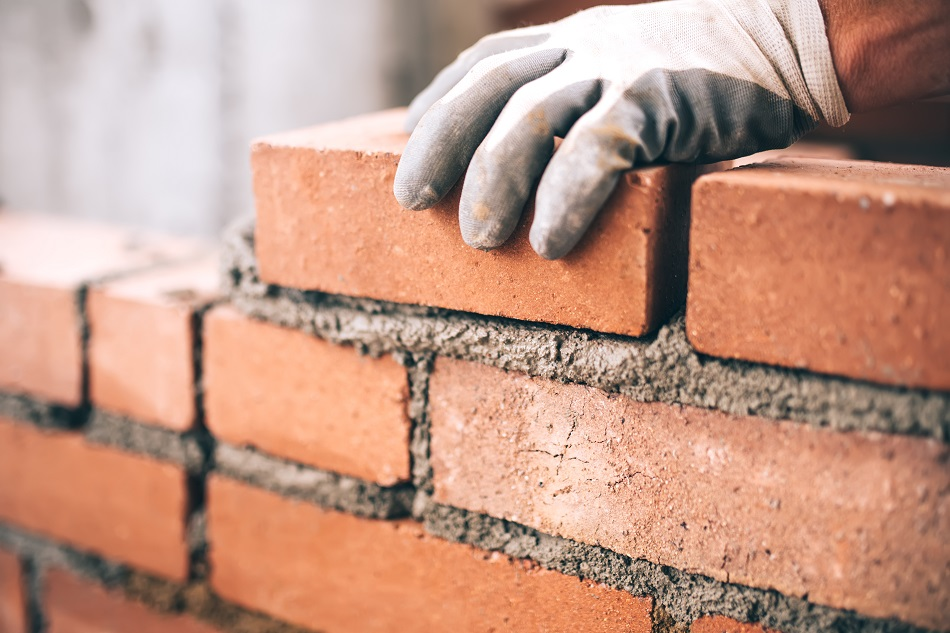Article Updated on 28th April 2021

Image Credit: bogdanhoda/Shutterstock.com
Rheology is the science of deformation and flow of matter. It deals with relationships between stress, strain, rate of strain, and time. Rheological properties are important in the structural characterization of particle-liquid systems. It also helps to determine how particle-particle interactions affect the stability of the slurry. Thus, rheology is immensely applied in the production of mortars.
The rheological properties of mortar pastes can be detected using a specific rheometer. The choice of rheometer depends upon the nature of the test material.
What is Mortar?
Mortar is fresh concrete without coarse aggregates. It is used in masonry to fill the gaps between the bricks and blocks used in construction. Mortar consists of a mixture of sand, a binder (cement or lime), and water. It is applied as a paste which then sets firm. Mortars conform to the Bingham model.
Mortar can be largely divided into two groups, i.e.
- micro mortar or fine mortar. This type of mortar consists of all constituents of mortar of size smaller than 250 μm.
- mortar consisting of coarse aggregate that is included in the mix.
Different Studies Reveal the Importance of Rheological Properties in Mortar Production
The rheological properties of concrete need to be well-adjusted to achieve specific goals such as limiting segregation, producing a good surface finish, minimizing pumping pressure, or controlling formwork pressure. Previous studies indicate that keeping the aggregate unchanged, the flowability of concrete mainly depends on the shear stress of mortar while the segregation resistance property of concrete depends on the plastic viscosity of mortar pastes.
The type of sand plays a great role in the production of mortar. Research on the effect of sand grading on building mortars showed that yield stress and plastic viscosity were both reduced by increasing water content in case of using fine sand. Sand grading and mix proportions are interrelated in a complex way and acted differently on yield stress and plastic viscosity. The knowledge of these complexities ascertains the possibilities for better and controlled mortar production.
Previous studies on the rheological properties of micro mortar and mortar have revealed that they undergo structural breakdown during shear and that the flow behavior can be described by the Bingham parameters yield stress and plastic viscosity.
A series of environmental issues are recently emerging with waste rubber, a type of automotive industry waste. To manage waste rubber disposal, waste rubber is used in the production of concrete. Rubber can thrive well in the alkaline environment of concrete which ensures an enormous utilization of waste rubber in its production.
Waste tires are crushed into particles and incorporated in lightweight aggregate concrete to prepare special concrete, i.e., self-compacting rubber lightweight aggregate concrete (SCRLC). The Bingham model can be employed to fit the relations between shear rate and shear stress of mortar pastes on various rubber particle replacement ratios.
Increasing the rubber particle replacement ratio in the mortar pastes significantly augments both the plastic viscosity and yield stress of mortar pastes. The fluidity of mortar depresses as the rubber particle replacement ratio rises.
Therefore, rheology can be an effective tool for specifying, designing, and managing concrete workability which determines concrete characteristics. The study of rheological properties would provide more relevant information on the quality of the concrete.
In summary, the following points show how rheology help in the production of better concrete:
- Segregation can be regulated by increasing the yield stress or plastic viscosity.
- A good surface finish can be achieved by having adequate viscosity. Low viscosity often enhances the risk of segregation. However, very high viscosity might not allow the air bubbles to escape.
- Pumping pressure mainly decreases with a decrease in viscosity. Decreasing the yield stress also decreases pumping pressure, but to a lesser extent.
- Formwork pressure can be reduced by using a high yield stress concrete or using a highly thixotropic concrete in slow filling conditions.
Sources and Further Reading
- Assefa, Y.A, and Ludger, L. (2016). Application of Rheology to Characterize the Stability of Mortar Compositions under Vibration.
- Jing L., Du Q., Zhou T., He Z., and Li K. Fresh and Mechanical Properties of Self-Compacting
- Rubber Lightweight Aggregate Concrete and Corresponding Mortar.2019. Advances in Materials Science and Engineering. 8372547: 14
Disclaimer: The views expressed here are those of the author expressed in their private capacity and do not necessarily represent the views of AZoM.com Limited T/A AZoNetwork the owner and operator of this website. This disclaimer forms part of the Terms and conditions of use of this website.